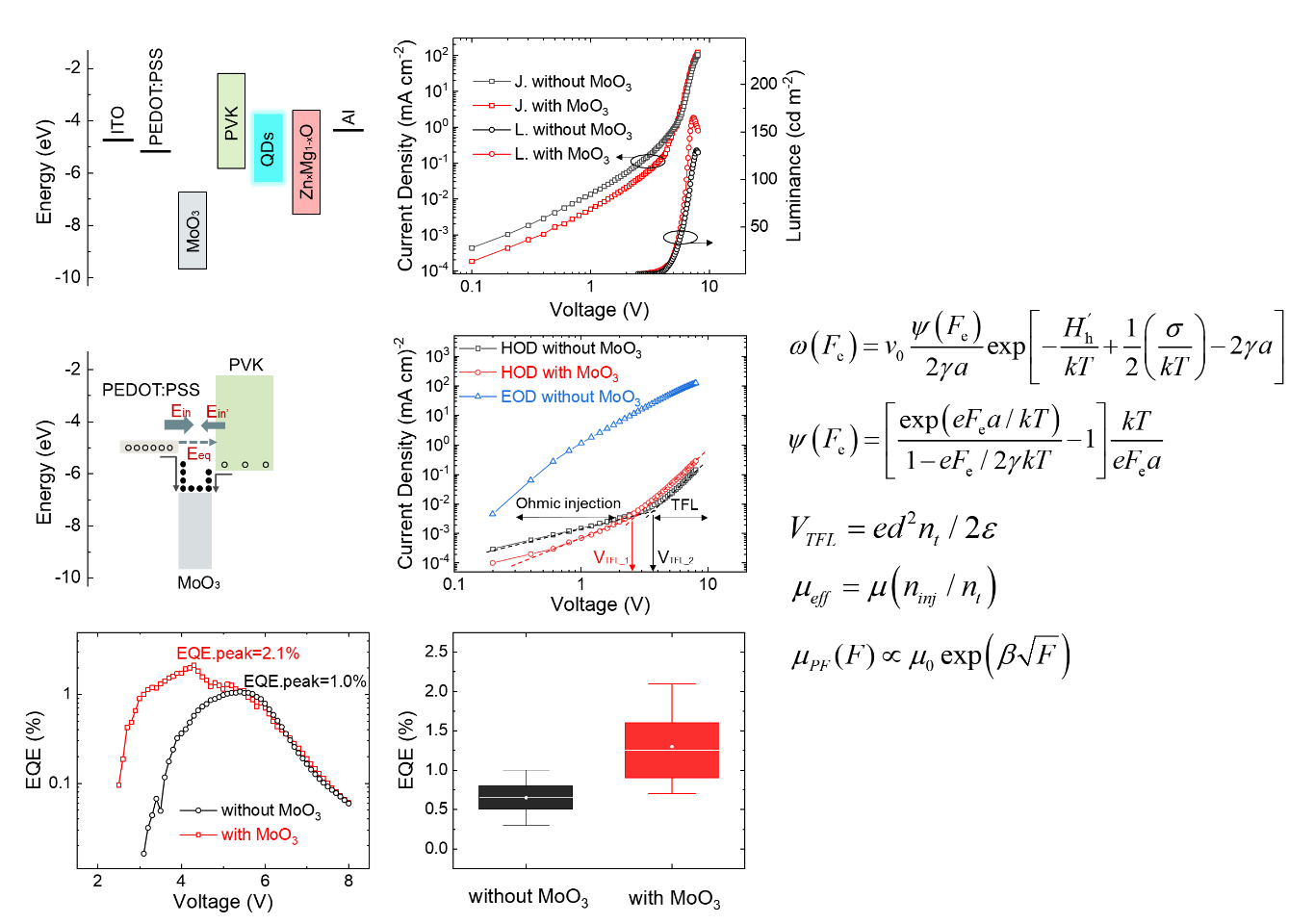In November 2021, Wu Dan, an assistant professor of our institute, published the latest research results at Applied Physics Letters under the title of "Enhancing hole injection by electric dipoles for efficient blue InP QLEDs" under the title of "Enhancing hole injection by electric dipoles for efficient blue InP QLEDs". Applied Physics Letters is an established classic journal sponsored by the American Physical Society (AIP) that publishes important research results in the field of applied physics, with a 2020 impact factor of 3.791 (JCRQ1, RANK6/58). Assistant Professor Wu Dan is the co-corresponding author of this article, and the co-corresponding authors are Associate Professor Wang Kai and Professor Sun Xiaowei of southern university of science and technology.
Indium phosphide (InP) quantum dot light-emitting diode (QLED) is an environmentally friendly light-emitting device that has received widespread attention from industry and academia in recent years due to its compatibility with low-cost solution treatment methods and low toxicity compared to traditional cadmium QLED. Although the outer quantum efficiency (EQE) of red and green InPQLED has been improved to 21.4% and 16.3% after years of efforts by researchers, and the stability has also been greatly improved, the highest EQE of blue Light InPQLED reported so far is only 2.5%, which is still far lower than that of cadmium competitors. Considering that the relatively severe carrier injection imbalance in blue InPQLED is an important performance limiting factor, the authors propose a method of inserting an ultra-thin MoO3 electric dipole layer (EDL) between the hole injection layer (HIL) and the hole transport layer (HTL), and constructing a pair of high-intensity built-in electric fields at the HIL/HTL interface that work together with the same direction as the hole injection to promote hole injection and transmission.At the same time, the deeper energy level of MoO3EDL enables it to produce an equivalent P-type doping effect on the HIL and HTL on both sides, thus increasing the carrier concentration of HIL and HTL at the interface and reducing the defect density of both, so that the effective hole mobility of HIL and HTL at the interface is effectively improved. Thanks to the above enhancements, the maximum EQE of Blue InPQLED with MoO3EDL was increased from 1.0% to 2.1% in the control group. This work provides an effective reference for the injection and transmission of modulated holes to achieve balanced injection of carriers in QLED.
Full-text link:https://aip.scitation.org/doi/full/10.1063/5.0071508

Fig. QLED energy level structure, current density-voltage-brightness characterization, schematic diagram of built-in electric field, carrier injection analysis based on SCLC model, EQE comparison and related calculation formulas.